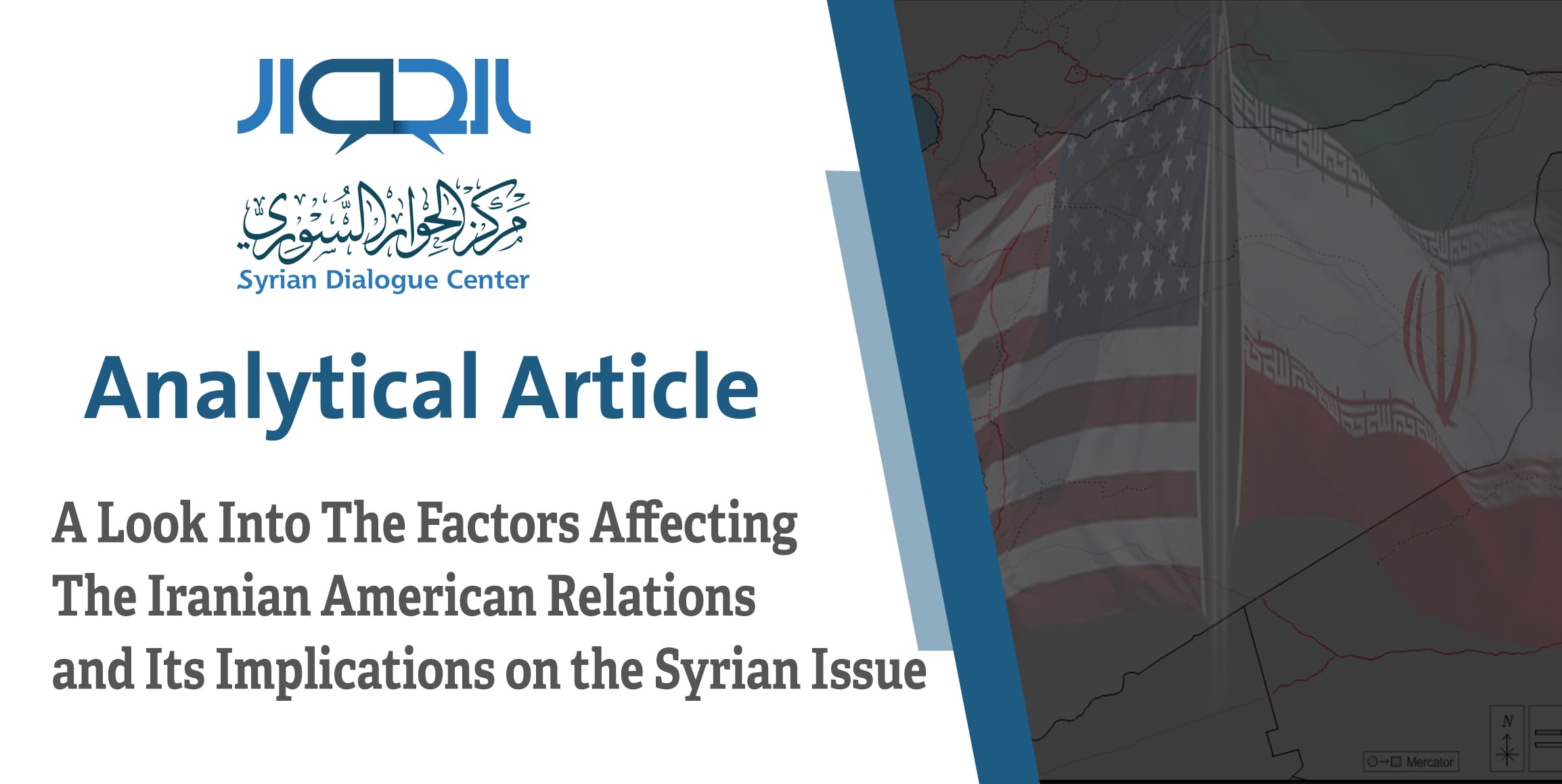
A Look into the Factors Affecting the Iranian American Relations and its Implications on the Syrian Issue
Analytical report produced by the policy analysis unit
The international community’s wager keeps getting bigger as the talks around the nuclear file in Vienna seem to lead to a new agreement between the global powers involved and Iran. After relatively lengthy rounds of negotiations the political and diplomatic atmosphere in Vienna seems very optimistic about the end of the negotiations episode, especially given the global powers’ reaffirmation that reviving the 2015 agreement with Tehran is very attainable where both the US and Iran go back to committing to the terms of the agreement.
Despite the breakthroughs in negotiations, some issues and obstacles remain, threatening to halt the negotiations and sour the relationship between the US and Iran once again. Iran presents some conditions that the USA finds simply unapplicable; as Iran demands the lifting of all economic sanctions placed on it by Trump’s administration after withdrawing from the agreement in 2018, as well as political guarantees from the US congress promising that no administration will ever backout from agreements again.
Many analysts predicted that the negotiations would halt with the return of “traditionalists” to power led by the Iranian president Ibrahim Raisi; however, it became clear soon that negotiations were ongoing and that many obstacles were crossed despite resistance by some factions in both camps, and “Israel’s” absolute rejection of the agreement and its reaffirmation that it is not concerned with it. Therefore, where state we are at now with regards to the dynamics in this American “Israeli” Iranian trinity wasn’t born out of current circumstances, indeed it goes back to the intersection of affecting factors in their relationships and the variance between them. To an extent that makes it very difficult for researchers to pinpoint all of them, specifically we mean the factors that developed with the rise of the Iranian revolution in 1979.
An attempt is made in the coming section to uncover the mystery of the intersecting and complicated relationship that brought Iran, “Israel”, and the US together. That is done through contemplating the history of relationships between the two sides and the main pivots they’ve taken, to draw an inclusive image of the dynamics of this relationship as well as understanding the factors driving them to agreement or disagreement. This helps react optimally to the interactions of this relationship and understand the intersections and common interests that can be built upon to help the Syrian people in their cause of combatting the Iranian project in Syria.
To Read the full Article (Arabic)
مؤسسة بحثية سورية تسعى إلى الإسهام في بناء الرؤى والمعارف بما يساعد السوريين على إنضاج حلول عملية لمواجهة التحديات الوطنية المشتركة وتحقيق التنمية المستدامة





